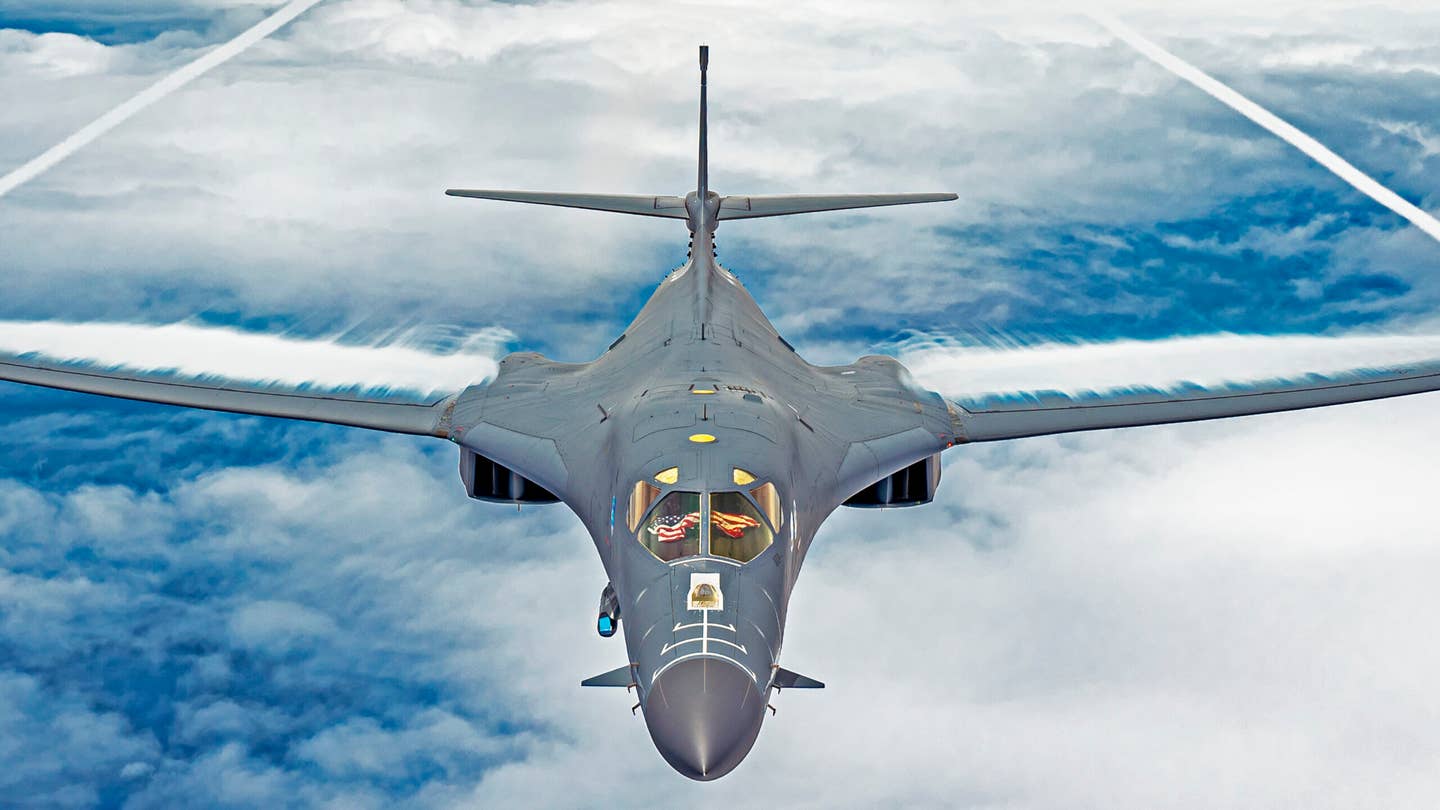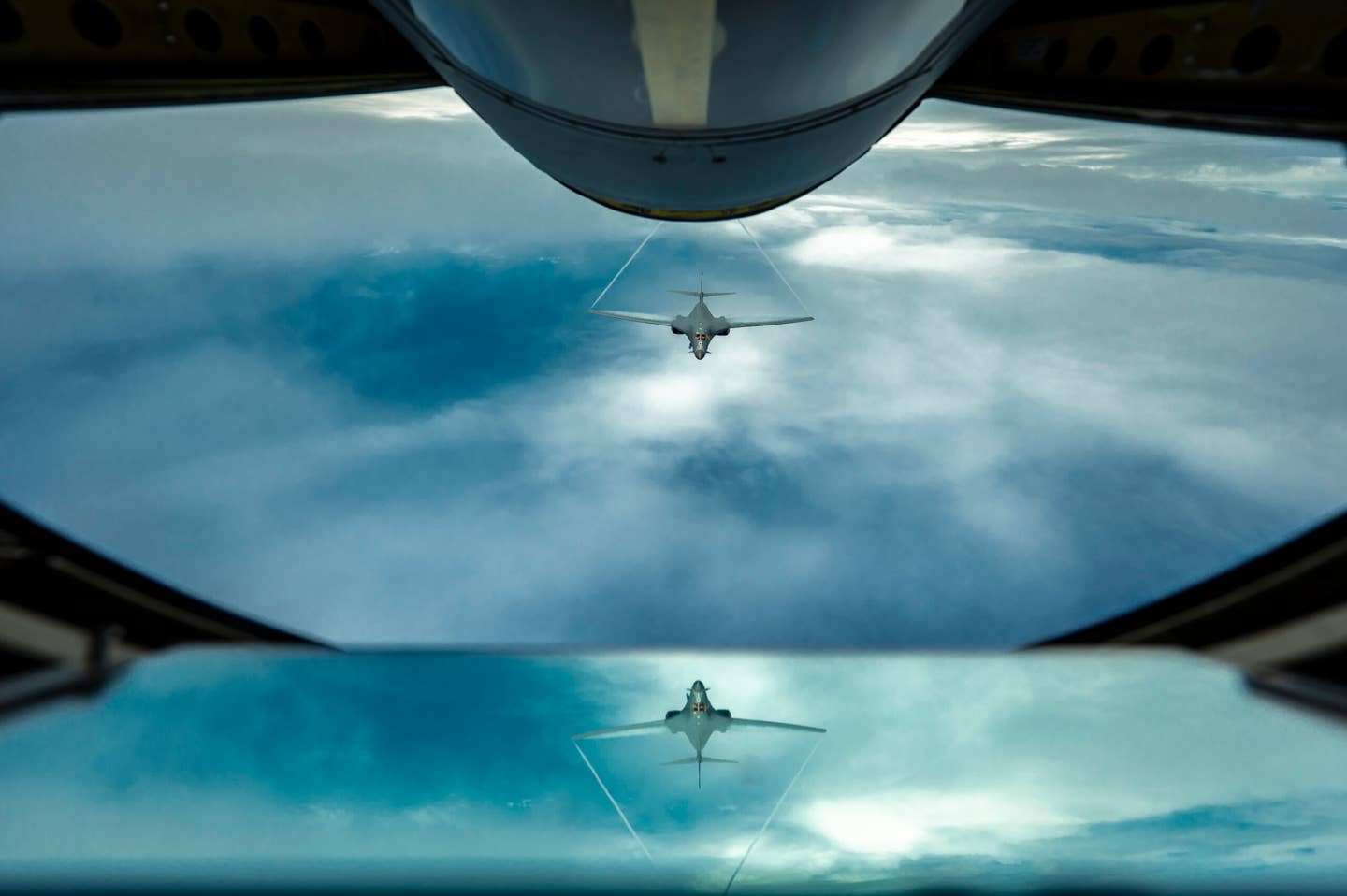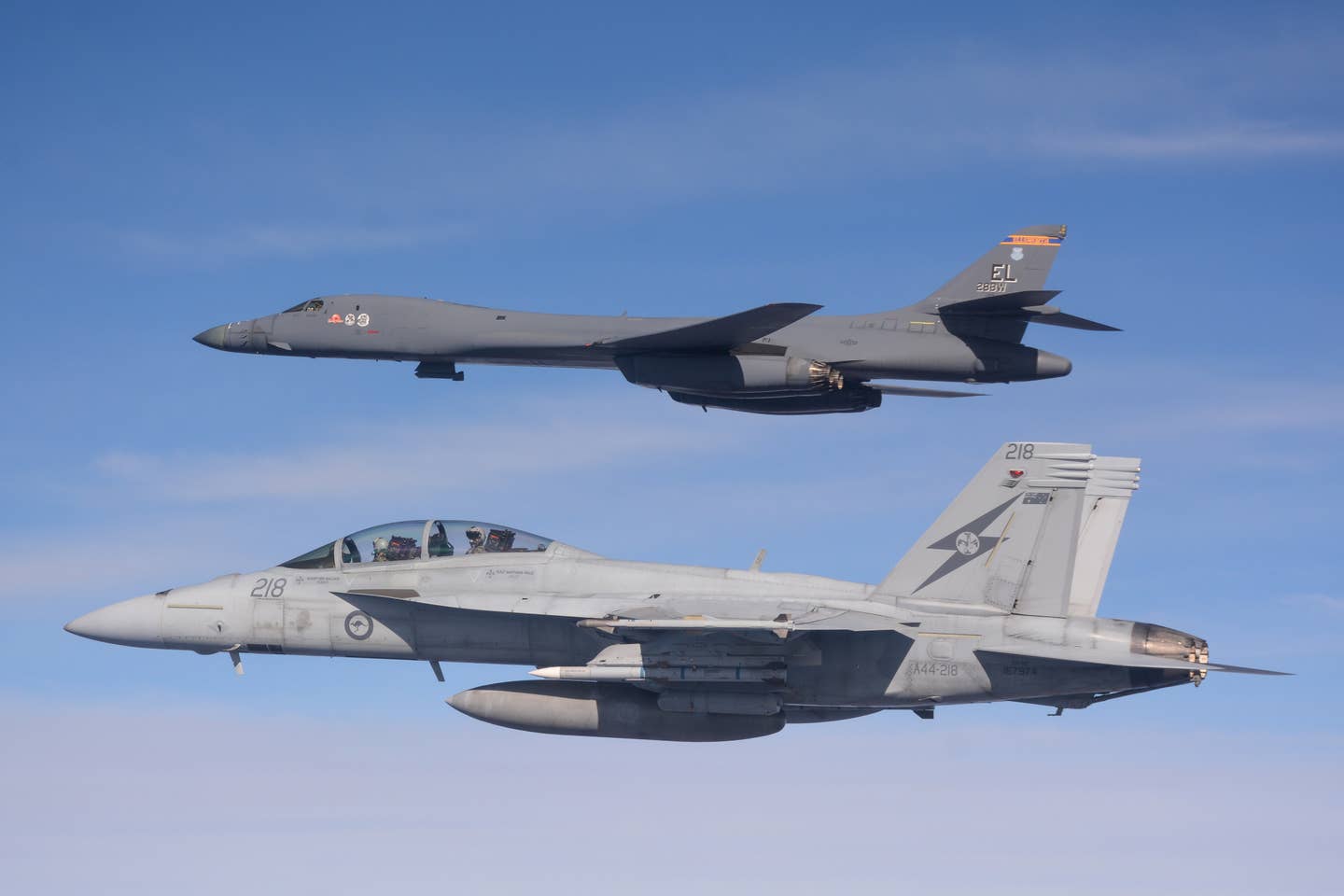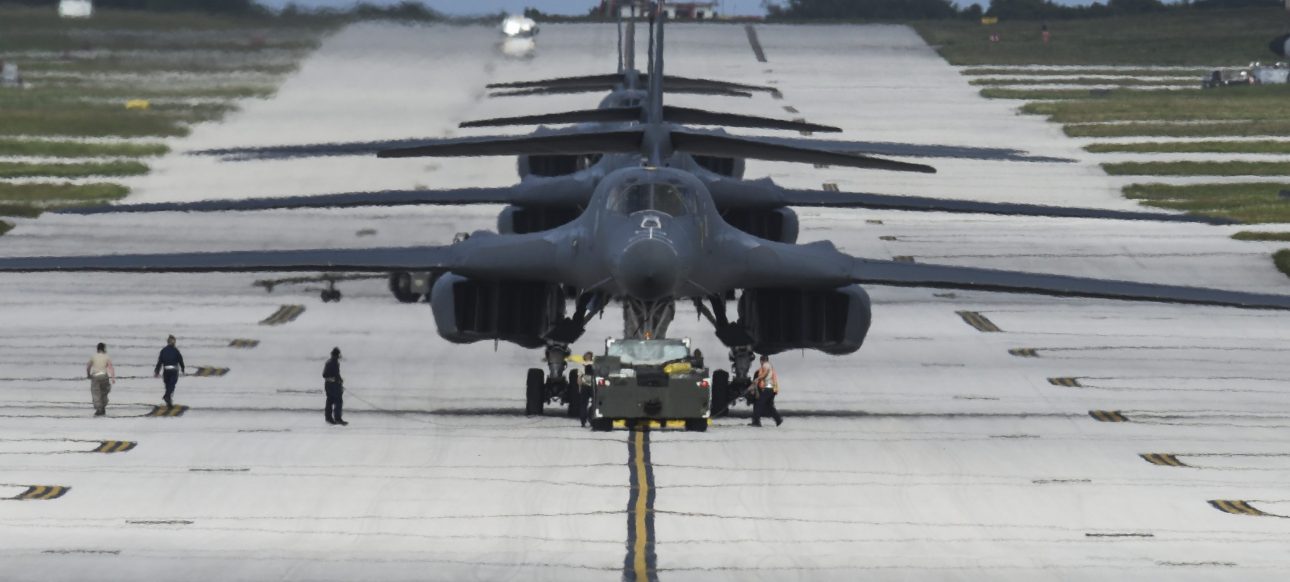The US Air Force (USAF) has released some mesmerizing images of the four B-1B Lancers stationed at the highly strategic Anderson Air Force Base on Guam Island which is a treat for the eyes of aviation enthusiasts across the globe.
The EurAsian Times reported that the four B-1B Lancers arrived on Guam Island on June 4. So far, they have participated in the large-scale Valiant Shield exercise, plus the Exercise Diamond Storm 22 with the Australian Air Force.
The four B-1Bs can be seen in action in some breath-taking photos released by the USAF of their stint in the Pacific region amid rising tensions with China and fears of the much-anticipated nuclear test by North Korea.
These awe-inspiring images are dramatically the USAF’s efforts at visually documenting the current B-1 Bomber Task Force (BTF) deployment.

The US no longer maintains ‘Continous Bomber Presence’ in Guam as it used to until 2020, following which bomber presence deployments to the Indo-Pacific have been sporadic with the USAF’s B-1, B-52, and B-2 bomber force conducting long-range patrols to Russia’s eastern borders and the South China Sea, mainly from the continental US.
The last time such a significant bomber presence on Guam has been noted was in February 2021, when B-52Hs were deployed to the island for the annual Cope North multi-national military exercises.
Projecting long-range air power in the Pacific region is critical for the USAF, especially during heightened tensions with North Korea.

Therefore, shortly before the arrival of these four B-1B bombers in June, Korean media reports had suggested that the latest BTF deployment could be related to the potential North Korean nuclear test.
Latest B-1B Lancers’ Pacific Deployment
So far, the B-1Bs are known to have been working with allies in the region and also took part in the ninth iteration of the Valiant Shield (VS) exercises, a series of large multi-domain wargames involving the US army, navy, marines, and airforce.
Russia ‘Smokescreens’ $3.7B Kerch Bridge As US Says Ukraine Can Strike Europe’s Longest Bridge
The exercises began on June 6 and lasted until June 17, concluding with the sinking exercise (SINKEX) on a decommissioned frigate, the ex-USS Vandegrift (FFG 48), which was fired upon with a range of munitions by various platforms.

These included the USS Ronald Reagan (CVN 76), USS Benfold (DDG 65), USS Key West (SSN 722), and the F-18s & F-35Bs from the Marine Fighter Attack Squadrons (VMFA-533 and VMFA-121), along with the B-1B Lancers.
The munitions fired by the B-1Bs remain undisclosed, but reports suggest it could have been the AGM-158C Long-Range Anti-Ship Missile (LRASM) or other precision ordnance.
In addition, B-1Bs also participated in Exercise Diamond Storm 22, which is the finale of the Royal Australian Air Force’s (RAAF’s) Air Warfare Instructor Course (AWIC), which took place from May 30 to June 24.

AWIC is a six-month course to train instructor candidates on various RAAF platforms, with aviators having exceptional talent selected to take part before returning to their units as instructors. It is similar to the USAF’s Weapons School Course or the US Navy’s Naval Strike and Air Warfare Center warfare schools, including ‘Top Gun.’
Concerns About Guam’s Vulnerability
The latest B-1 deployment has come amid growing concerns about Guam’s vulnerability to enemy attack, especially from the various long-range and hypersonic weapons being developed by China.
Guam is home to major US military facilities, such as Andersen AFB, the only US base in the Western Pacific capable of storing heavy bombers for extended periods, which would be a vital element of any future potential US conflict in the Indo-Pacific region, for example, with China in case it invades Taiwan.

Experts suggest that more than 50 US bombers armed with the new and stealthy AGM-158C LRASM – One B-1 can carry 24 LRASMs, and one B-52 can carry 20 – can threaten the Chinese warships operating almost anywhere in the Western Pacific.
Therefore, China has been consistently working to acquire the capabilities needed to destroy the key facilities on Guam to impede the US movement in the region.
For example, a few years ago, China unveiled the DF-26 intermediate-range ballistic missile, which can kill targets up to 3400 miles (5471km) away. China labeled this missile “the Guam Killer.”
Furthermore, China released a propaganda video in 2020 depicting a simulated attack on Guam, in which nuclear-capable H-6 bombers can be seen hitting what appears to be the US’ Andersen AFB.
The USAF is also investing in other airfields in the region that its bombers can potentially use. For example, the expansion work at the Tinian International Airport on Tinian Island, located 196 kilometers northeast of Guam, could provide an alternative operating location to Andersen AFB.
- Contact the author at tanmaykadam700@gmail.com
- Follow EurAsian Times on Google News




